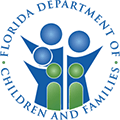Understanding Self Injury
Learn More About Self Injury
Self-harm, also known as “self-injury,” “non-suicidal self-injury” and “cutting,” is the act of intentionally harming one’s own body such as head banging, cutting, or burning oneself, that is not intended as a suicidal act. Self-injury is an unhealthy form of coping with strong emotions such as anger, emotional pain, and frustrations. The most common form of self-injury is skin cutting, but self-harm does include a variety of other types of self-inflicted harm. Other forms of self-injury may include a wide variety of behaviors such as burning, scratching, trichotillomania, dermatillomania, drinking bleach or other poisons, or hitting oneself. While the intention for those who self-injure may not be suicide, some of the self-injurious behaviors may lead to life-threatening consequences and death. While self-harm is most commonly seen in adolescence and the teen years, often beginning between the ages of 12 and 24, this behavior is not limited to the teen years. Self-injury may occur at any age.
Many people are confused by the notion of intentionally causing physical pain to oneself, but self-injurious behaviors may be a way for some people to express and cope with feelings of marked distress such as self-loathing, guilt, shame, rage, and emptiness. It may sound counterintuitive, but the physical manifestation of deeply distressing emotional pain makes some people feel relief. Unfortunately, the feelings of relief noted by those who self-injure don’t last very long and often create additional problems in their lives. People who self-injure often carry the burden of self-injury alone; keeping their behaviors private and secret. This is often a huge load to shoulder as the self-injury begins to plague relationships with loved ones and may change how you feel about yourself. These feelings can lead to further isolation, sadness, and intensely distressing emotions.
With proper treatment and therapies, most people are able to stop self-injurious behaviors and learn more healthy ways of tolerating intense emotions and stress. While self-harm may have helped you in some way, there are other ways to handle your feelings and go on to live a happy, self-injury free life.
Statistics
Statistics on Self Injury
While self-injury is typically thought of as an act done by those in their teens and young adult years, it can occur at any age. In the U.S. the number of emergency room visits for self-inflicted injury was roughly 713,000 in 2010. It’s estimated that every year, about 2 million people living in the U.S. deliberately injure themselves in some manner. It’s been estimated that approximately 1% of the population are habitual self-injurers, with typical age of onset at puberty.
Causes of Self Injury
What are the Causes and Risk Factors of Self Injury?
There is not one single root cause that leads to the development of self-injurious behaviors. The coagulation of emotions that trigger someone to engage in self-harm is often deeply personal and complex.
Physical: The act of injuring oneself or experiencing physical pain cause the brain and central nervous system to react to the injury by inhibiting ascending nerve signals and blocking pain. Then, our body’s natural pain-relieving opiate neurotransmitters – endorphins, enkephalins, and dynorphins – are released, which can offer the sensation of being intoxicated.
Environmental: The urge to self-injure is often attributed to strong emotions that an individual has no other way of expressing. They may be triggered by events such as a breakup of a romantic relationship, death of a loved one, or bullying. Additionally, those who have friends who self-injure are at a higher risk for self-injurious behaviors. Some people who engage in self-injury may have grown up in a home in which emotions were not allowed to be expressed.
Risk Factors:
- Substance use and abuse
- Age – most who self-injure are teens or young adults
- Mental illnesses – PTSD, eating disorders, borderline personality disorder, anxiety, and depression
- Women are more likely to self-injure than men
- Childhood abuse or neglect
- Poor impulse control
- Poor problem-solving abilities
- Limited social network
- Low self-esteem
Signs and Symptoms of Self Injury
Learn More About the Signs and Symptoms of Self Injury
As self-injury takes many forms, it may be a challenge to determine when you or a loved one is engaging in self-injurious behaviors. Some of the most common symptoms of self-harm include:
Behavioral symptoms:
- Spending greater periods alone
- Withdrawing from once-loved activities
- Blood-stained clothing, bedding, or towels
- Frequent “accidents”
- Sharp objects in the person’s belongings
- Withdrawing from friends and loved ones
- Wearing long-sleeves or pants in all types of weather
- Compulsively picking at scabs
- Risky sexual behaviors
- Extreme substance use and abuse
- Increasingly secretive behaviors
- Impulsive behaviors
- Unpredictable behaviors
- Binge drinking
- Decreased functioning at work, home, or school
Physical symptoms:
- Fresh cuts, scratches, or bruises
- Unexplained scars or wounds – especially on arms, wrists, thighs, and legs
- Broken bones
- Hitting your head or banging your body into walls
- Punching walls
- Sticking things into your skin
- Swallowing poisons
- Scratching or cutting your skin
- Wounds that won’t heal
- Pulling hair
- Biting
Cognitive symptoms:
- Questions about personal identity
- Beliefs of inadequacy
- Distorted self-image
- Negative worldview
- Belief that their needs are unimportant
- Fear of change
- Difficulty handling feelings
- Magical thinking
Psychosocial symptoms:
- Hopelessness
- Pervasively low self-image
- Self-loathing
- Emotional instability
- Guilt
- Anger
- Shame
- Secrecy
Effects of Self Injury
Understanding the Effects of Self Injury
While self-injury is not a suicidal act, it can be a very dangerous way of coping with intense feelings. Some of the long-term effects of self-injury include:
- Infected cuts
- Broken bones
- Scars
- Permanent disfigurement
- Worsening feelings of shame, guilt
- Worsening of underlying mental illnesses and emotional well-being
- Increasingly low self-esteem
- Life-threatening complications such as blood loss if a major vessel is nicked
Co-Occurring Disorders
Self Injury and other Co-Occurring Disorders
People who engage in self-injury are often coping with an undiagnosed or undertreated mental disorder. The most common co-occurring disorders include:
- Depressive disorders
- Anxiety disorders
- Borderline personality disorder
- Post-traumatic stress disorder
- Substance abuse
- Alcoholism
- Eating disorders
- Compulsive behaviors











